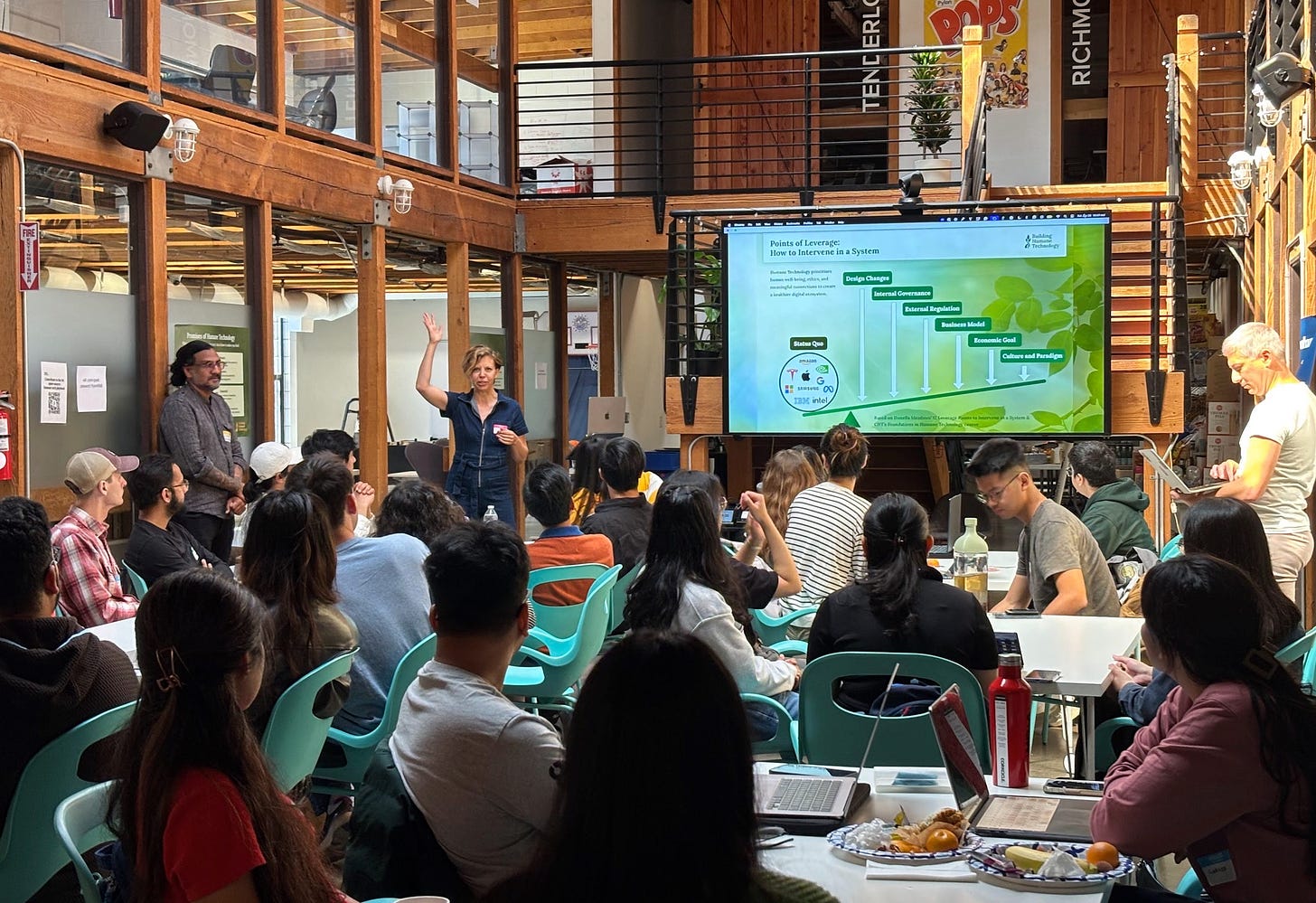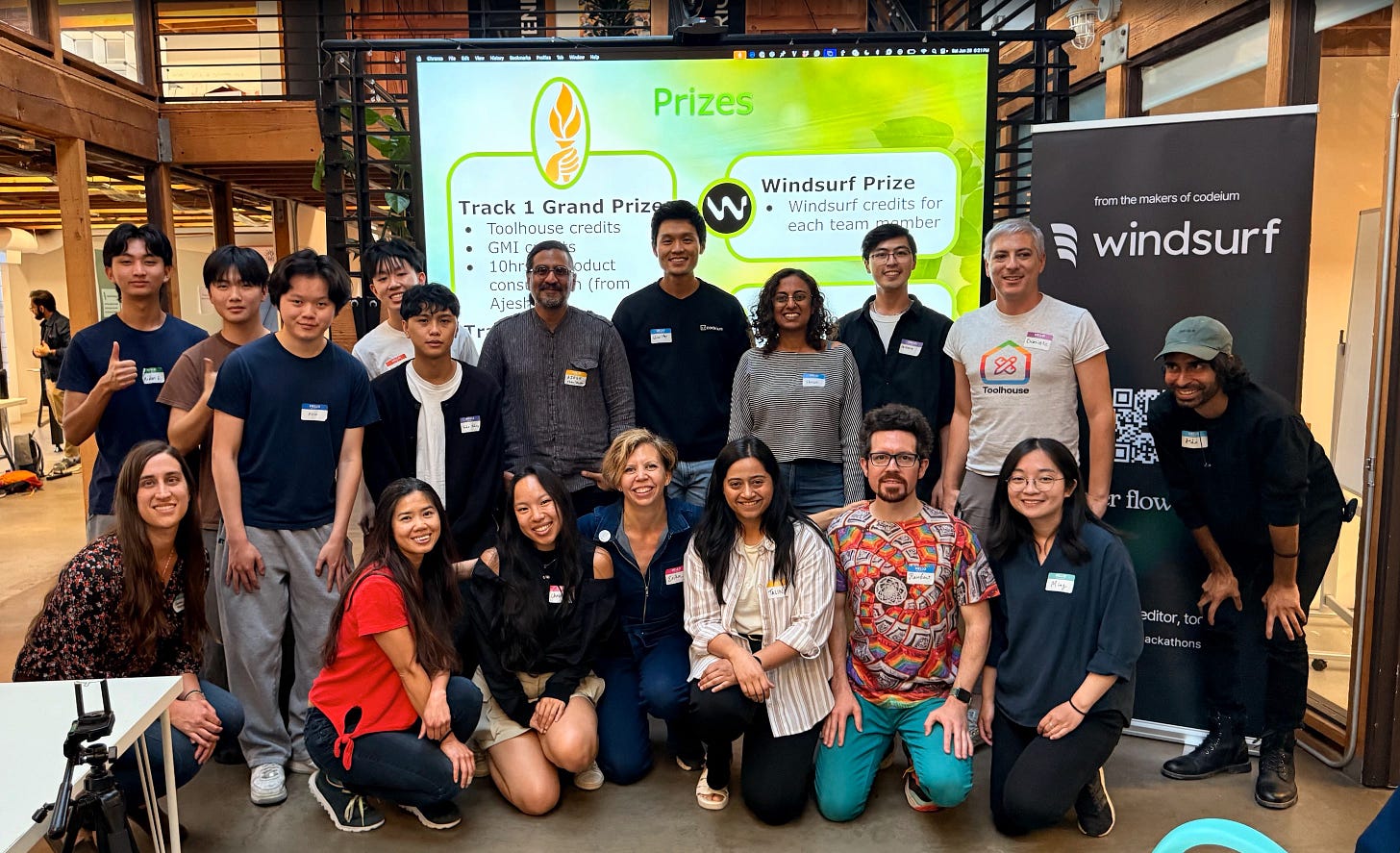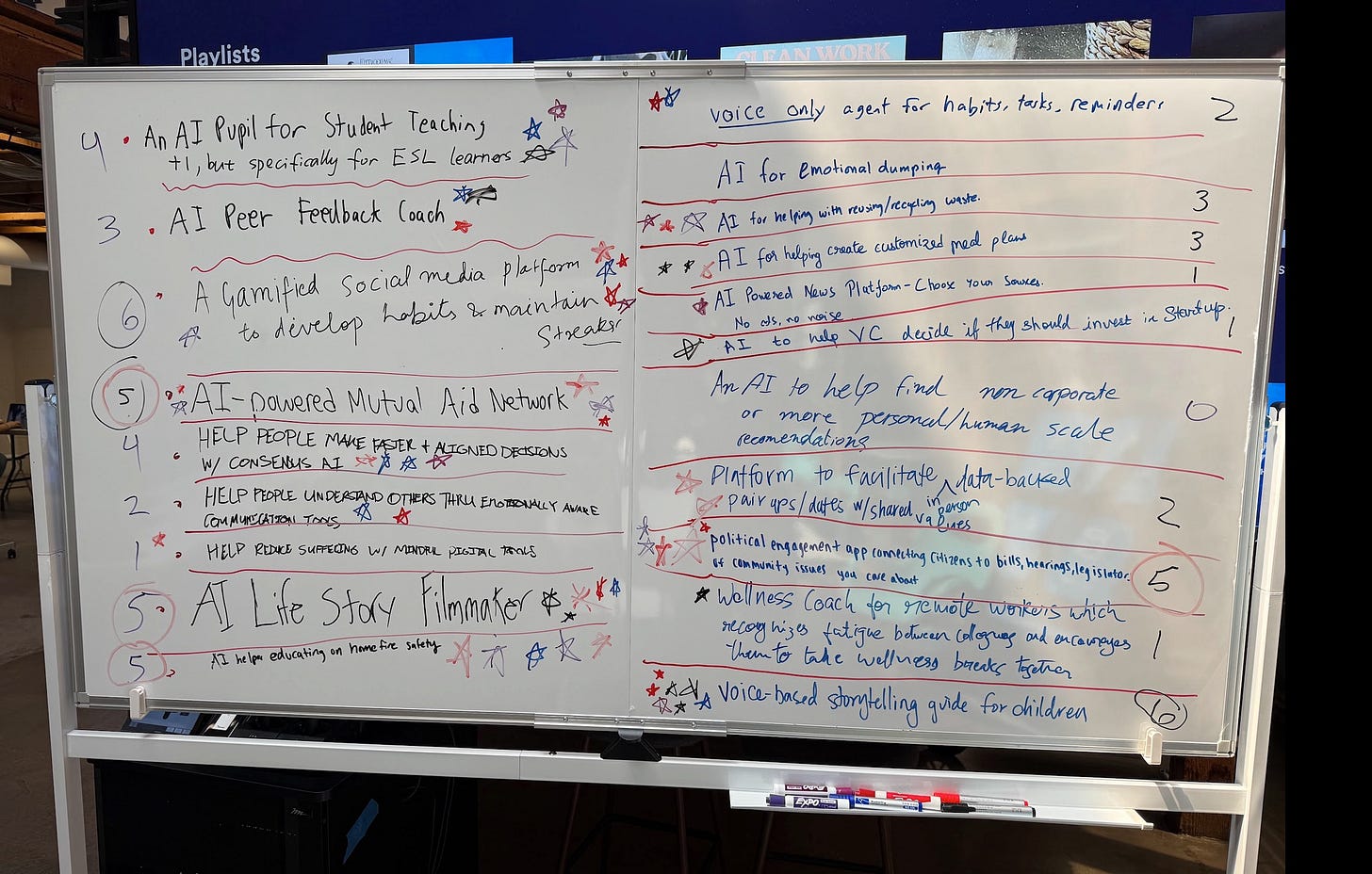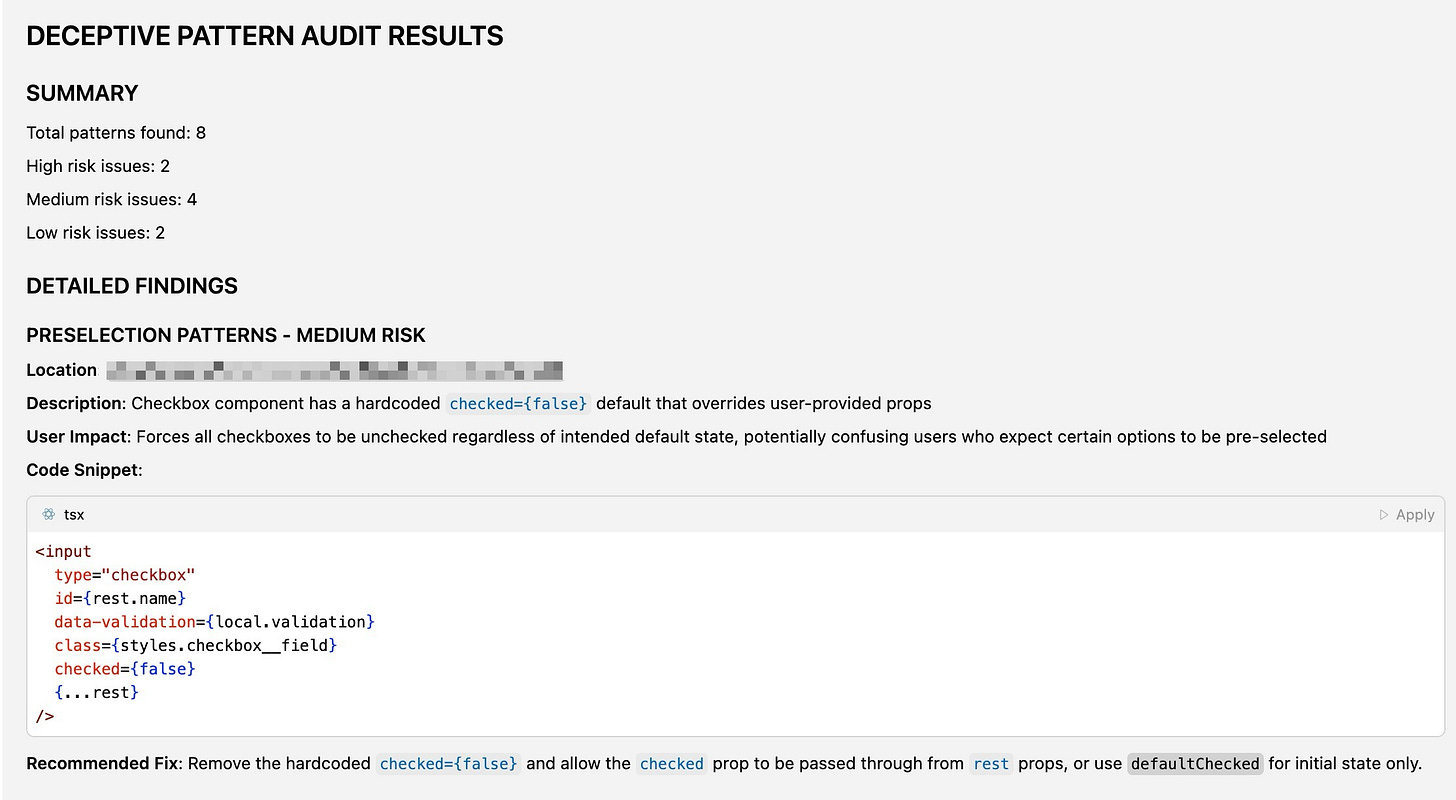A day of intentional creation, where "humane first" wasn't just a buzzword—it was the foundation on which everything else was built.
Last Saturday, something beautiful happened in San Francisco. In the bright, airy offices of Pylon, more than 50 builders, designers, dreamers, and deeply thoughtful humans gathered for our first Humane Tech Hackathon: Vibe Coding for Humanity. What unfolded wasn't just another coding competition—it was a living experiment in what happens when we lead with humanity first, then let the technology follow.
As I watched teams form and ideas crystallize throughout the day, I kept thinking about the systems thinking framework we opened with—how the most powerful changes happen not at the level of policies or structures, but at the level of paradigms and culture. What I witnessed wasn't just people building apps; it was people embodying a different way of creating technology entirely.
Opening the Space: From Individual to Collective

The day began with an essential question: "Why are you here?" Not what you're building, not what you hope to win—but what brought you to spend your Saturday in service of more humane technology.
When folks registered for the event, responses ranged from deeply personal experiences with technology's harm to professional frustrations with extractive business models to simple curiosity about what "tech for good" could actually look like in practice.
During our welcome, we introduced a working framework for evaluating humane technology: when you interact with a humane product, you should feel cared for, genuinely connected, present in both body and mind, and fulfilled. Simple criteria, but revolutionary in their implications for how we build.
Folks looking for a team wrote their ideas on a whiteboard, then voted with stars. This organic team formation had a curiosity and sweetness to it; it felt more like people finding their creative collaborators than assembling technical resources.
What People Built: Technology as Care in Action
The diversity of solutions that emerged was striking—not just in their technical approaches, but in how they redefined what problems technology should solve.
ClearFeed tackled information overload with a personalized news assistant that prioritizes vetted sources over engagement metrics. The team recognized that the real problem isn't lack of information—it's the anxiety and burnout that comes from swimming in unfiltered, often manipulative content streams.
AI Pupil flipped the traditional learning model by giving students an AI to teach, recognizing that we learn best when we're in the role of educator. The psychological safety embedded in the design—a non-judgmental pupil that makes small mistakes to help identify knowledge gaps—showed deep understanding of how learning actually works.
Rapid Relief AI addressed the crisis in 911 call centers by using AI to help overwhelmed operators prioritize calls and reduce response times. What struck me most was the team's recognition that technology should support human operators, not replace them—amplifying their capacity to help rather than making them obsolete.
Flying Solo created a space for emotional processing between therapy sessions, with different AI personas representing various therapeutic approaches. The careful attention to not replacing professional therapy while still providing genuine support showed remarkable nuance in understanding technology's appropriate role in mental health.
Ready Together reimagined disaster preparedness as community building, connecting neighbors to share resources and support each other through emergencies. The shift from individual preparedness to collective resilience felt especially important — think mutual aid meets tech, something I wish I’d had during the last hurricane in Brooklyn.
By The People made political engagement more accessible by connecting users to relevant bills, legislation, and community issues, while simplifying how citizens can find their representatives and engage with local hearings, exemplifying how technology can strengthen democratic participation rather than extract engagement for profit.
The Magic of Emergence: When Process Becomes Product
What made this hackathon different wasn't just what people built—it was how they built it. Teams formed organically around shared values rather than complementary skill sets. Disagreements were welcomed as creative fuel rather than obstacles to overcome.
The Storytime team exemplified this beautifully. Their AI-powered interactive storytelling platform for children wasn't just about reducing screen time—it was about strengthening the parent-child bond while supporting early language development. The sophisticated voice recognition that could track both parent and child contributions showed technical excellence in service of human connection.
Attached brought existing relationship wellness tools together through an AI agent that guides users from overwhelming emotions to cognitive clarity. As a live product already in the App Store, it demonstrated that humane technology isn't just a hackathon ideal—it's a viable business model. Watch this video to see how the founders changed their pricing based on what they learned:
Déjà View tackled the problem of lost family stories by making life story documentation accessible to everyone, not just those who can afford professional videographers. The statistic that 53% of Americans can't remember all four grandparents' names hit deep—technology as a tool for preserving wisdom and connection across generations.
Beyond the Code: Building the Infrastructure for Humane Tech
Perhaps the most significant work happened in Track Two, where Jack Senechal and I contributed to the open-source Humane Tech repository. We updated the "humane linter"—a tool that scans codebases for deceptive patterns like infinite scroll—represents the possibility of infrastructure-level change. Because building that properly will take substantive work, we pivoted to creating a deceptive patterns prompt to run on your code base with the help of a coding assistant.
This work might be less visible than flashy demos, but it's arguably more important. Making humane development the easy path rather than the hard path could transform how technology gets built at scale.
For instance, see Jack’s initial evaluation of Claude Sonnet 3.5 vs GPT 4.0 using humane tech metrics—TL;DR Claude wins by a mile.
Reflections: The Ripple Effects of Intentional Creation

As the day wound down and teams prepared their final presentations, the energy in the room had transformed. People weren't just tired from coding—they were energized by having spent a day building things that genuinely mattered to them.
The grand prize went to Rapid Relief AI, recognizing both technical innovation and the urgent real-world problem it addressed. The honorable mention for Storytime highlighted the judges' appreciation for its innovation and interactivity.
A special acknowledgement for Jan, who received the Windsurf prize as a solo hacker. While she has some front-end skills, it was her first time vibe coding—perfectly embodying the event's principle that humane technology is for anyone passionate about serving humanity.
But the real victory was subtler and more profound. In showing that it's possible to build technology that genuinely serves human flourishing, every team contributed to a growing proof of concept for a different kind of tech industry.
The invitation Ajesh offered at the end feels worth repeating: take this energy and these principles back to your regular work. Plant seeds with friends and colleagues. Show people that we don't have to choose between building successful products and building humane ones.
Need more proof that you don’t need to be technical to participate in a hackathon? Watch this conversation with first-time hacker Amarpreet.
What struck me most about this hackathon wasn't the sophistication of the technical solutions—though many were genuinely impressive. It was the palpable shift in energy when people get to build from their values rather than around artificial constraints like engagement metrics or growth at all costs
We often talk about the need for more ethical technology, but ethics alone aren't enough. We need technology that actively supports human flourishing, that strengthens rather than fragments our communities, that respects rather than exploits our attention and agency. And we need frameworks that make it easy and scalable.
The teams that gathered last Saturday proved this isn't just possible—it's energizing, innovative, and deeply fulfilling for the people building it. They've given us a glimpse of what the tech industry could look like if human flourishing is the goal.
That's the paradigm shift we're after. And watching it emerge in real time gives me tremendous hope for what's possible.
Gratitude & Acknowledgments
Deep appreciation to our incredible sponsors who made this day possible: Toolhouse (with CEO Daniele providing hands-on support), Windsurf (with Matt from their community team), Pylon (for hosting us in their beautiful space), Thesys (with Shawn Charles offering mentorship), UpHonest Capital for your unwavering support, and GMI Cloud.
Special thanks to our thoughtful judges: Talina (Couchbase), Nick (Head of Research at Windsurf), and Ashu Desai (founder and coach). And immense gratitude to the organizing team: Sarah Thornton and Ajesh Shah, whose dedication made the day flow beautifully.
Most importantly, thank you to every participant who spent Saturday building for humanity. Your creativity, thoughtfulness, and collaboration made this day extraordinary.







congratulations, erika! what an extraordinary event!
Feels like a welcoming and innovative space 😊⚡